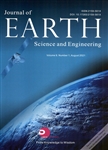Analysis of Ship Evacuation during Tsunami Using AIS (Automatic Identification System) Data
Analysis of Ship Evacuation during Tsunami Using AIS (Automatic Identification System) Data作者机构:Graduate School of Maritime Sciences Kobe University Hyogo 658-0022 Japan
出 版 物:《Journal of Earth Science and Engineering》 (地球科学与工程(英文版))
年 卷 期:2012年第2卷第7期
页 面:412-417页
学科分类:07[理学] 0707[理学-海洋科学] 08[工学] 080203[工学-机械设计及理论] 0802[工学-机械工程]
主 题:Great east Japan earthquake Tsunami AIS ship evacuation.
摘 要:External forces of marine weather, such as waves, currents and wind flows, affect the course and speed of a ship under way. As a result, marine accidents, such as collisions or grounding, may occur, particularly in inshore areas. On coasts where earthquakes and tsunamis occur frequently, such as the Japanese coast, a tsunami that advances into a bay from the open sea is influenced by the submarine topography. It grows into a huge wave that could cause tremendous damage to ships under way and at anchorage. A massive earthquake occurred in the Tohoku and Kanto regions of Japan on March 11,2011. In response, a tsunami alert, a tsunami warning and an advisory were issued for the entire Pacific coast region. This research investigates the evacuation behaviour of ships by AIS (automatic identification system) data in Tokyo Bay after the tsunami warning was issued. The unusual behaviour observed was attributed to the emergency evacuation of ships.



